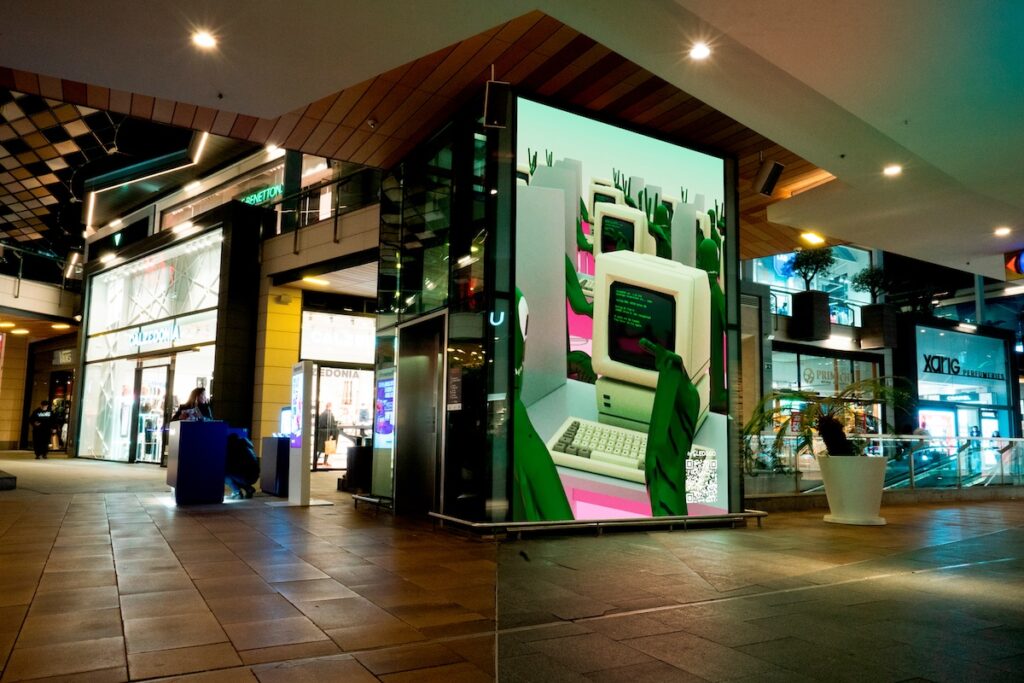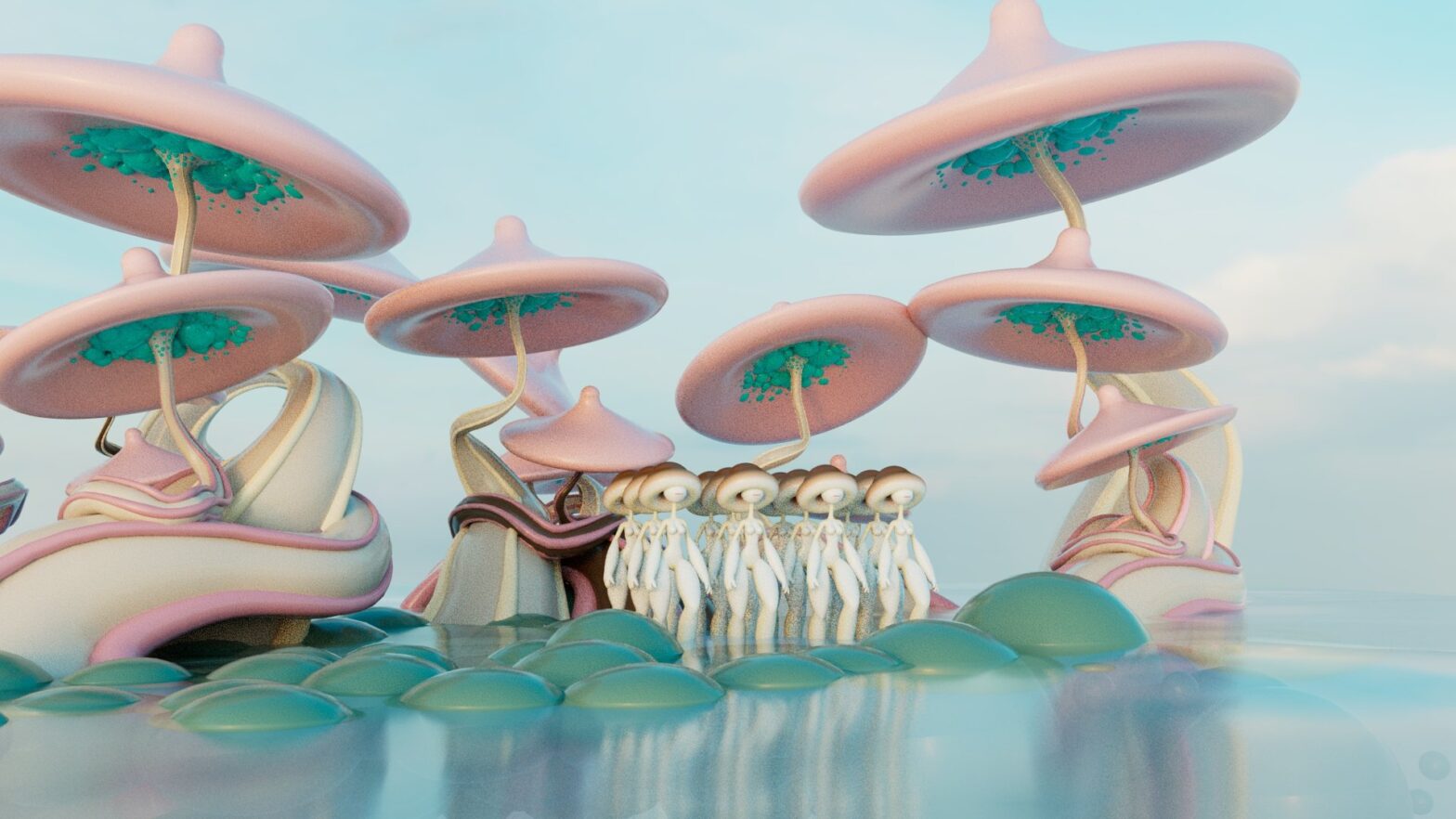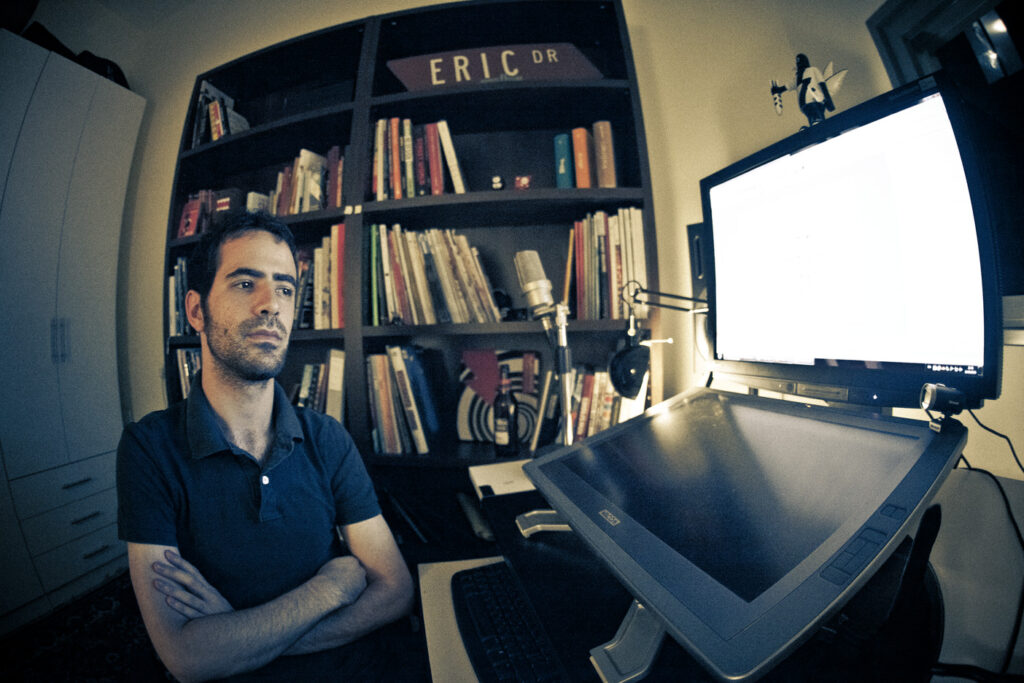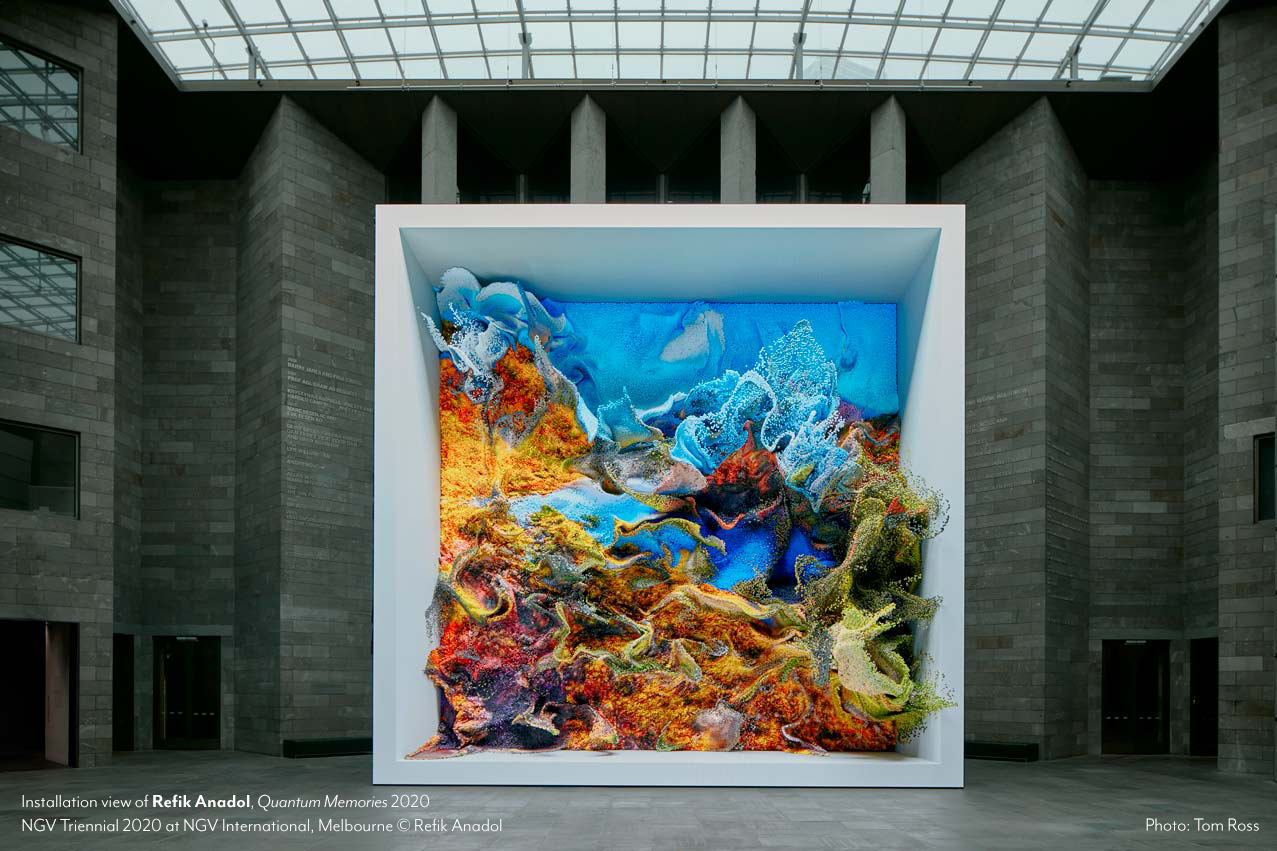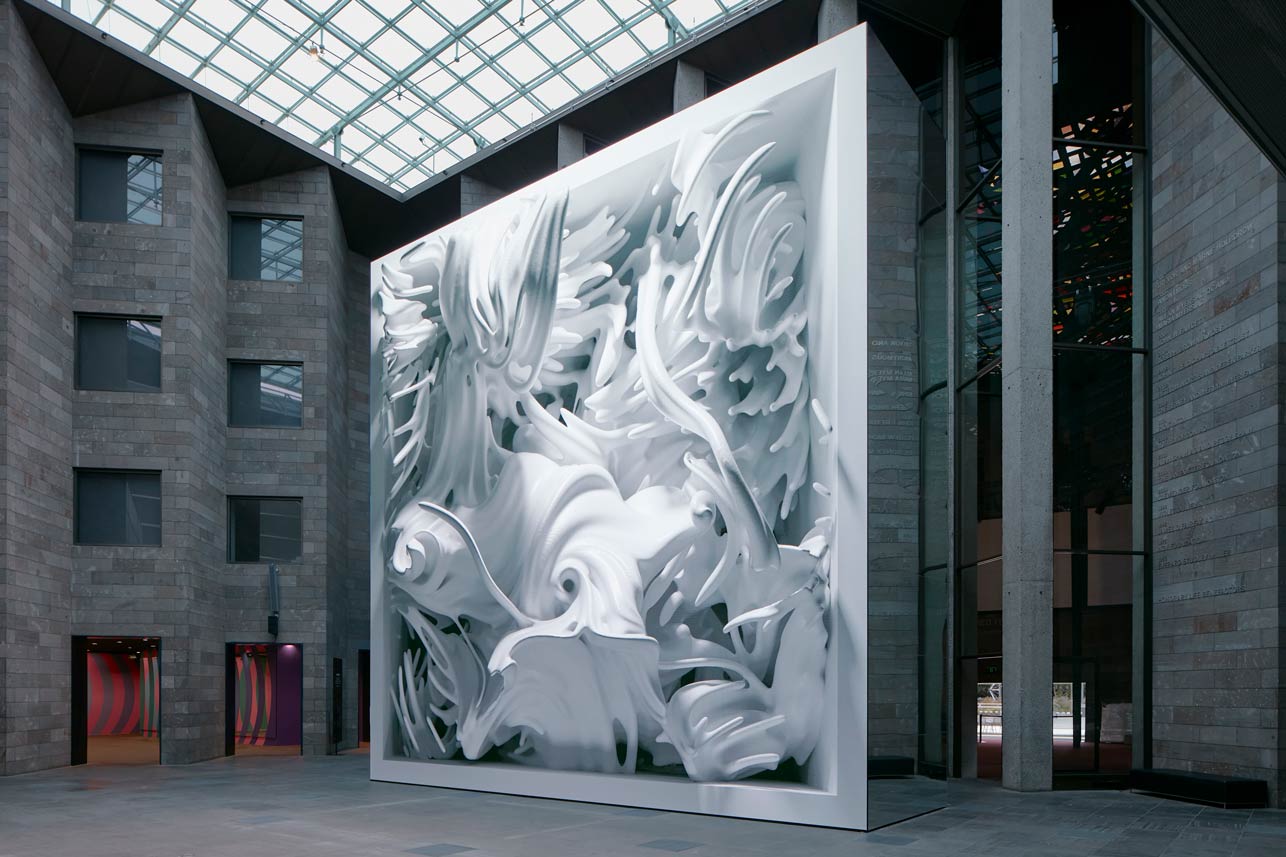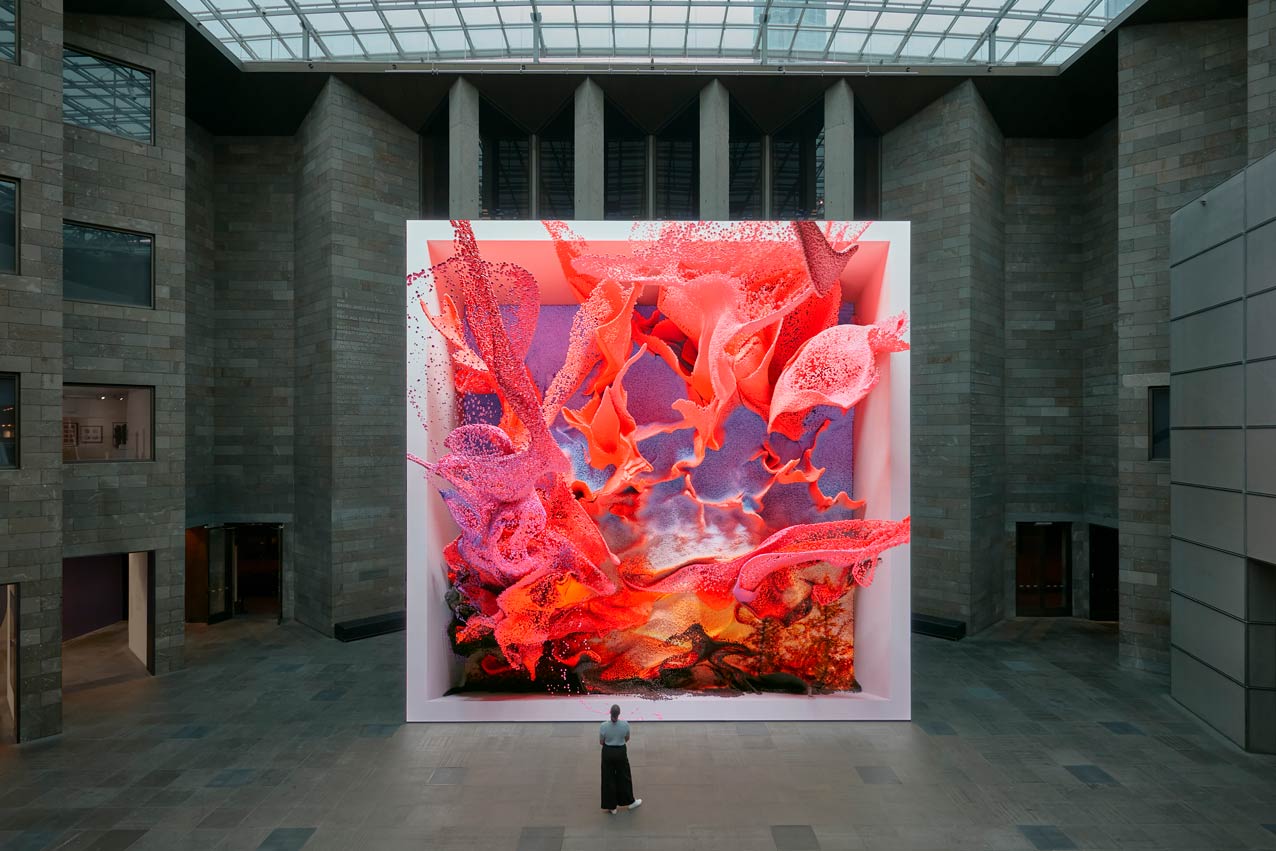Pau Waelder
This interview is part of a series dedicated to the artists whose works have been selected at the SMTH + Niio Open Call for Art Students. The jury been selected at the SMTH + Niio Open Call for Art Students. The jury members Valentina Peri, curator, Wolf Lieser, founder of DAM Projects/ DAM Museum, and Solimán López, new media artist, chose 5 artworks that are being displayed on more than 60 screens in public spaces, courtesy of Led&Go.
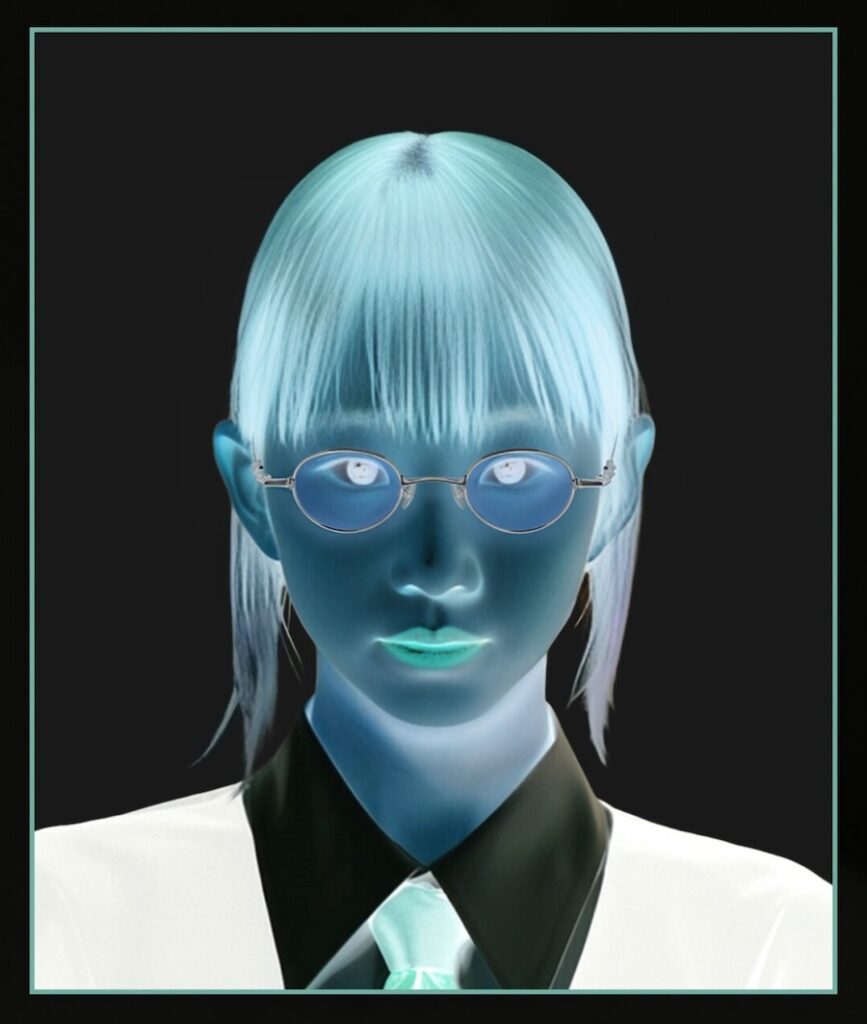
Rolin Dai is an artist deeply interested in exploring new narrative forms by means of 3D images, animations, and various types of time-based media. Born and raised in Shenzhen, China, she is currently studying Photography and Imaging at New York University’s Tisch School of the Arts. Her artistic work is characterized by an approach to storytelling that looks for positive messages and explores a variety of aesthetic influences ranging from Bauhaus rationalism and classic animation films to Y2K design.
Rolin Yuxing Dai. Conform or Not, 2023
In “A fortuitous cosmic afterthought” you express an approach to storytelling that seems key in your work, which is to look for positive emotions and joyful ambiences even when facing difficult subjects. Can you elaborate on this choice and whether it defines a particular aesthetic in your digital art works?
In visual storytelling, I think there’s always an immense power in exploring positive emotions and moments of love and joy even within the context of challenging subjects since it helps to build a deeper connection in a world that often feels divided and tumultuous. Due to my personal preferences, most of my work is situated within a fantastical realm but its thematic essence remains firmly grounded in reality – I reckon that we can only reassess problems from an objective perspective when we step out of the conventional boundaries of space. Overall, I hope my artwork can be not only relatable but also offer an easygoing atmosphere that uplifts my audiences and serves as a catalyst for contemplation.
“Most of my work is situated within a fantastical realm but its thematic essence remains firmly grounded in reality.”
In terms of aesthetics, your work brings to mind fantastic realms such as Lewis Carroll’s Alice in Wonderland, as depicted in the 1951 Walt Disney film, digital animations from the early 2000s, Oskar Schlemmer’s Triadic Ballet, and Vaporwave. Can you tell me more about your influences and the role they play in your digital artworks?
Drawing from a fusion of both my personal experience and academic journey – from my fascination with Y2K style to the Bauhaus aesthetics taught in school – I have always been immersed in various artistic styles and consistently integrated them into my creative process. Thus, it’s hard to define the specific pattern among my works as it reflects a fluid amalgamation of all the influences. However, I realize that a recurring theme across them is the utilization of a vibrant color palette. Notably, I am drawn to the approach of artists like Schlemmer, who employed color not only for its visual appeal but also as a fundamental tool for spatial organization, and thematic expression in his theatrical productions. Consequently, I have combined aspects of his aesthetic into certain 3D works, driven by a desire to try out some new perspectives when combining the old elements with contemporary technology.
Rolin Yuxing Dai. Y2KIDS, 2024
Another subject that appears frequently in your work is escapism, that you connect on the one hand with vintage aesthetics (clothing, objects) and on the other with the need to stay within the comfort of home and let imagination go rather than confront the outside world. This is a common feeling that is facilitated by digital technologies. How do you address this subject?
I recognize my tendency towards escapism and nostalgia, as I believe in the value of reminiscence to remember who we used to be. Regarding the inspiration from the vintage, a significant portion of my artwork includes objects featured in the 2000s, years in my early childhood in which memories are all fragmented and blurred. I’m deeply influenced by the Y2K aesthetic and things that I like today always have a pinch of this aesthetic. Rather than a critique of the rapid pace of today’s information landscape, I view it as a homage to a collective memory or a yearning for a bygone era. Besides, I always find a feeling of peacefulness when wandering off into imaginative thoughts or fantasies since it serves as a repository of all my inner emotions. Thus, either through nostalgia or seeking comfort in familiar surroundings—what can be called escapism—it brings profound energy and meaning as these moments hold significance for me, offering a sense of connection and grounding in an ever-changing world.
“I’m deeply influenced by the Y2K aesthetic. Rather than a critique of the rapid pace of today’s information landscape, I view it as a homage to a collective memory or a yearning for a bygone era.”
Conform or Not?, the winning artwork in the SMTH + Niio Open Call, addresses both the escapism into a fantasy world and leaves open the question of being different or celebrating being part of the mass. Can you elaborate on the concept behind this artwork and its making?
As our life today is marked by hyper-individualism, the distinction between conformity and individualization has become increasingly pronounced, exemplified by the ability of an individual to influence widespread trends, attracting millions of followers, or one may deliberately seek to distinguish himself in a rapidly evolving social landscape. In this project, I don’t want to make a point that either the behavior is something good or bad but more in an open-ended way. Perhaps exploring the potential of conformity for fostering moments of simple happiness amidst shared experiences.
For the creating process, I tried with different 3D assets and built the virtual scenes in Maya. In the first part about the mushroom world, I was inspired by supporting actors in cartoons since conforming is a pretty common behavior among them which always contributes to a whimsical ambiance for the whole drama. Similarly, the portrayal of extraterrestrial life on a distant planet reflects a charming form of conformity amongst its inhabitants. The last scene features typing endeavors and I aim to capture the essence of a prevalent modern-day profession – programmers. Despite the demands, there’s a significant number of individuals dedicated to this field. Many of my acquaintances have pursued computer science because they used to believe a coding career has scope—not just today, but well into the future. Nevertheless, I intend to express that whether we choose to conform or assert our uniqueness, the paramount principle remains to stay true to our genuine selves. It is through this authenticity that we embody our true selves and cultivate meaningful connections with the world around us. After all, the world could be one that celebrates the one; the world could be one that celebrates the mass.

The SMTH + Niio Open Call brings you and four more artists the opportunity to have your work displayed on more than 60 screens in several shopping malls in Spain. What is your opinion about this kind of project, that aims to bring digital art closer to a wider audience in public spaces?
I think by presenting the digital work in a physical venue, it avoids the phenomenon of algorithmic audience segmentation because each viewer can experience a first-hand engagement. It will establish a deeper connection with the audience that differs from other digital engagements via handheld electronic devices. Given the thematic focus of my work on human dynamics, the audience somehow plays a role akin to the characters in the piece as the work serves as a backdrop for them. Besides, when our artwork is placed in diverse locations and spaces, additional layers of significance might emerge from it, enriching the overall meaning.

“Presenting the digital work in a physical venue avoids the phenomenon of algorithmic audience segmentation because each viewer can experience a first-hand engagement.”
You are currently majoring in Photography & Imaging at NYU Tisch School of the Arts. What has the school brought to your artistic practice? Which opportunities can be created from this and other similar institutions for emerging artists?
During my time in school, in addition to mastering photographic techniques, we were encouraged to experiment with emerging technology to produce innovative artwork. From a technical standpoint, I was trained a lot related to the field of post-photography such as 3D modeling, animating, and scanning through the use of a variety of software. I also found the cross-disciplinary setting of our program especially beneficial for me as it allows me to delve into diverse subjects extending beyond visual arts, including liberal arts and science. This comprehensive approach allowed me to draw inspiration from other fields, thereby enriching my creative process and the development of ideas.
“I found the cross-disciplinary setting of our program at NYU Tisch especially beneficial for me as it allows me to delve into diverse subjects extending beyond visual arts, including liberal arts and science.”
In your photography and video work, there is a marked interest in people, relationships and being different. You address these subjects with care and sensitivity, can you tell me more about your approach to photography and video as a means to tell these stories, as distinct mediums, and also in connection with your work with digital technologies?
In my approach to creating photography and video content, I find myself more of an observer role rather than that of a creator, especially when compared to my work in 3D art as those traditional mediums often involve a closer and more immediate interaction with my subjects, either through verbal communication or eye contact. Regarding its connection with my digital artwork, I usually try to apply my photographs as references for my 3D creations. I also feel that certain visual narratives are better conveyed through non-traditional mediums, prompting me to explore new ways to expand the possibilities of storytelling.
